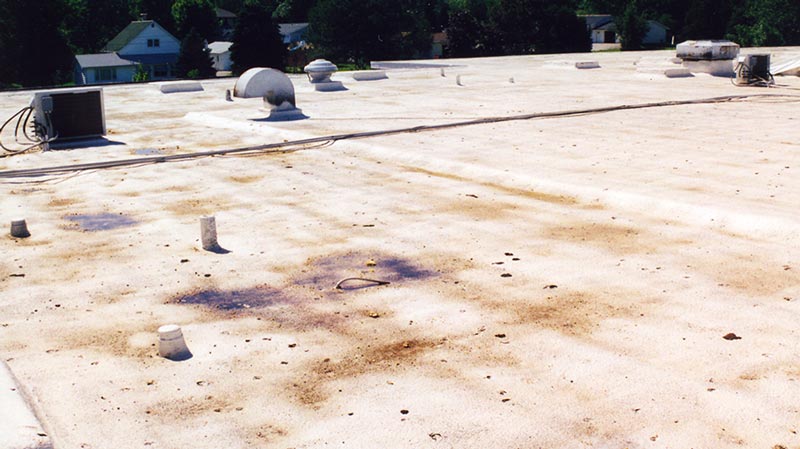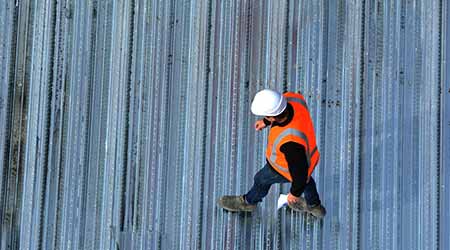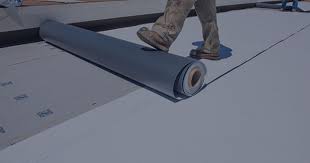What to Know About Hail Damage on Commercial Roofs

Hailstorms pose a significant threat to commercial properties. Indeed, hail damage commercial roofing can lead to costly repairs. Therefore, business owners must understand the impact of hail. Also, they should know how to identify and address this damage. Ignoring it can cause bigger problems later. Thus, prompt action is crucial. A small crack today can become a major leak tomorrow.
How Hail Damages Commercial Roofs
Hailstones vary significantly in size and density. Consequently, they cause different types of damage. Furthermore, wind speed and direction affect impact severity. Strong winds increase the force of impact. Moreover, the type and age of your roofing material matter. For instance, a newer, impact-resistant roof handles hail better. Conversely, older roofs are more vulnerable. Their materials become brittle over time. Even small hailstones can then cause significant harm.
Signs of Hail Damage
Recognizing hail damage early is key. Moreover, not all damage is immediately obvious. Therefore, a thorough inspection is always recommended. Look for these specific indicators.
Dents and Dings: You will often see circular indentations. These appear on metal components. For example, vents, gutters, and flashing show this. Moreover, they indicate direct hail impacts. These dents can also compromise the material's protective coating. This leaves it vulnerable to corrosion.
Granule Loss: Asphalt shingles have protective granules. Hail impacts dislodge these granules. Consequently, you may find them in gutters. This exposes the underlying material. Once exposed, the asphalt can degrade quickly. This shortens the shingle's lifespan considerably.
Cracks and Bruising: Hail can crack or bruise roofing materials. This includes shingles and membranes. Therefore, look for spiderweb patterns or soft spots. These can lead to leaks. Bruised areas might feel soft or spongy underfoot. This indicates internal damage.
Punctures and Tears: Larger hailstones create more severe damage. They can puncture or tear roofing membranes. Thus, this directly compromises the roof's integrity. Water intrusion then becomes a risk. Even small punctures can allow significant water entry. This leads to interior damage and mold growth.
Water Stains Inside: Internal water stains signal a leak. This leak might stem from hail damage. Always check ceilings and attic spaces. Look for discoloration or dripping. These stains often appear long after the initial damage. They signify a persistent problem.
Impact on Different Roofing Materials
Different commercial roofing systems react differently to hail. Furthermore, understanding these differences helps in assessment. Each material has unique vulnerabilities.
Metal Roofs: Hail causes dents and dings. It also chips paint. This exposes the metal. Consequently, rust becomes a concern. The aesthetic appeal of the roof also suffers. Extensive denting can affect drainage.
Flat Roofs (Membrane/Asphalt): Hail can create punctures. It also causes tears in the membrane. Furthermore, granule loss is common. This lessens the roof's protective layers. Such damage compromises the roof's waterproofing. Ponding water can worsen the situation.
Built-Up Roofs (BUR): Hail impacts can displace gravel. They also cause cracks. This exposes underlying layers. Therefore, water can easily seep in. The exposed felts and asphalt degrade faster. This leads to premature roof failure.
Single-Ply Roofs (TPO/EPDM/PVC): Hail can cause circular impact marks. These might not immediately puncture. However, they can weaken the material. Over time, tears or punctures can develop. UV exposure then accelerates this breakdown. The integrity of the seam welds can also be compromised.
Addressing Warehouse Building Hail Damage
A warehouse building hail damage assessment is vital. Moreover, larger commercial structures face unique challenges. Their extensive roof areas present bigger targets. Therefore, inspections must be comprehensive. Do not overlook any section.
Immediate Action: After a storm, ensure safety first. Do not climb on the roof without proper training. Instead, conduct a ground-level visual check. Look for obvious signs of damage. Clear any debris from the roof. This prevents further damage.
Professional Inspection: Always hire a commercial roofing contractor. They possess the expertise. They also use specialized tools. They can identify hidden damage. This prevents further issues. A drone inspection can also provide a safe and thorough overview.
Document Everything: Take clear photos and videos. Document all visible damage. Note the date of the storm. This evidence is crucial. It supports your insurance claim. Keep a detailed log of all communications.
Temporary Repairs: Implement temporary fixes if needed. Tarps or patches can prevent further water entry. This mitigates additional damage. Always keep records of these repairs. These temporary measures are not long-term solutions. They buy you time for permanent repairs.
Navigating Commercial Roof Hail Damage Claims
Dealing with insurance companies can be complex. However, proper preparation simplifies the process. Being organized helps your claim succeed.
Review Your Policy: Understand your insurance coverage. Know your deductible. Also, clarify what your policy covers. Does it cover replacement cost or actual cash value? Contact your insurance agent for clarification.
File the Claim Promptly: Report the damage quickly. Most policies have time limits. Delays can hurt your claim. Provide all documentation readily. A prompt report shows due diligence.
Work with Your Contractor: Have your roofing contractor present. They can explain the damage to the adjuster. This ensures a fair assessment. They can also help negotiate. Their professional opinion holds weight.
Obtain Detailed Estimates: Get a comprehensive repair estimate. Ensure it includes all necessary work. Compare it with the insurance adjuster’s estimate. A detailed estimate justifies the repair costs. It prevents lowball offers.
To Wrap Up
Commercial roof hail damage requires a proactive approach. Regular inspections help prevent issues. Furthermore, quick action after a storm minimizes losses. Thus, protecting your commercial asset is paramount. Investing in impact-resistant materials can also save money in the long run.
Note: IndiBlogHub features both user-submitted and editorial content. We do not verify third-party contributions. Read our Disclaimer and Privacy Policyfor details.





